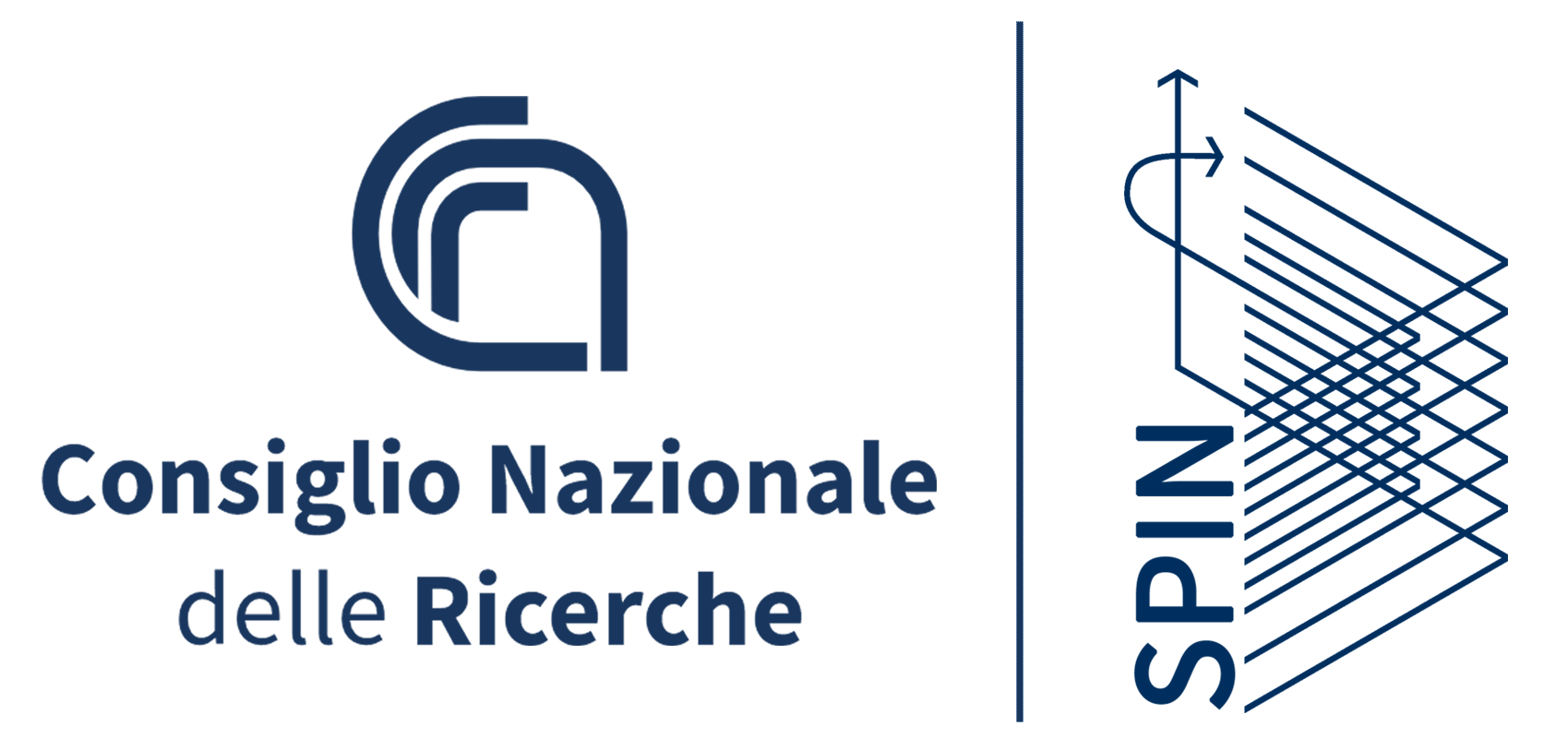Every year, SPIN assigns an award by selecting a young researcher who, as member of our community, is the first author of a distinguished paper published in an international Peer Reviewed journal.
2024
Anomalous Nernst effect in the topological and magnetic material MnBi4Te7
Michele Ceccardi
Cohautors:A. Zeugner, L. C. Folkers, C. Hess, B. Büchner, D. Marré, A. Isaeva & F. Caglieris
npj Quantum Mater. 8, 76 (2023)
Motivation:
The candidate presented the results of the research activity on topological effects on the transport properties of semimetallic Weyl ferromagnetics. The presentation was clear, straightforward, and complete, showing the results obtained, the experimental techniques used and possible theoretical interpretations. The excellent command of the subject matter shown by the candidate allowed him also to propose new lines of research that could further clarify various aspects of the physics of the problem and have considerable impact.
Winner of the previous editions:
2023
Ferromagnetic Quasi-Two-Dimensional Electron Gas with Trigonal Crystal Field Splitting
Yu Chen
Cohautors: M. D’Antuono, N. B. Brookes, G. M. De Luca, R. Di Capua, E. Di Gennaro, G. Ghiringhelli, C. Piamonteze, D. Preziosi, B. Jouault, M. Cabero, J. M. González-Calbet, C. León, J. Santamaria, A. Sambri, D. Stornaiuolo, M. Salluzzo
ACS Appl Electron Mater 4, 3226 (2022).
Motivation:
The paper originates from an international collaboration led by CNR-SPIN, involving several prestigious European research institutes. It reports on the realization and characterization of an artificial ferromagnetic quasi-two-dimensional electron gas at the (111) interfaces between LaAlO3, EuTiO3, and SrTiO3. The LaAlO3/SrTiO3 interface has been one of the hottest topics in condensed matter physics over the last two decades, and this work contributes to the investigation of the interplay between ferromagnetism, spin–orbit coupling, and crystal field splitting in such a quasi-2DEG. In this article, the candidate played a relevant role in both the fabrication and characterization of the interfaces and in the realization of models for the analysis of the experimental results. During the seminar, the candidate presented the arguments in a clear and comprehensive way and demonstrated an understanding of the overall logic of the paper, even of the experiments in which he was not directly involved.
2022
Anyons in Quantum Hall Interferometry
Matteo Carrega
Cohautors: L. Chirolli, S. Heun, L. Sorba
Nature Reviews Physics volume 3, pages 698–711 (2021)
Motivation:
In this paper, Carrega el al. review the recent theoretical and technological advances in Quantum Hall interferometry. Beside representing the first example of topological quantum matter, the quantum Hall effect in the fractional regime involves excitations with fractional statistics whose detection and manipulation represent key milestones in view of topologically protected quantum computation schemes. The review paper, the first comprehensive one in this cutting-edge research field, clearly highlights the important contributions of the candidate and his expertise and mastery of the topic.
2020
Spontaneous skyrmionic lattice from anisotropic symmetric exchange in a Ni-halide monolayer
Danila Amoroso
Cohautors: P. Barone, S. Picozzi
Nature Communications, volume 11, Article number: 5784 (2020)
Motivation:
The paper reports the prediction of the existence of a spontaneous network of anti-biskyrmions in a two-dimensional centrosymmetric magnet. The topic is at the cutting edge of the research field on the magnetic properties of low-dimensional systems, as highlighted by the high impact factor of the journal on which the paper was published.
The role of the candidate is recognizable and relevant, both for the technical contribution (simulations) and for the interpretation of the results, and their placement in the reference scientific landscape.
2019
Laser surface texturing of copper and variation of the wetting response with the laser pulse fluence
Elaheh Allahyari
Cohautors: J. JJ Nivas, S. L. Oscurato, M. Salvatore, G. Ausanio, A. Vecchione, R. Fittipaldi, P. Maddalena, R. Bruzzese, S. Amoruso
APPLIED SURFACE SCIENCE, Volume: 470, Pages: 817-824, DOI: 10.1016/j.apsusc.2018.11.202, Published: MAR 15 2019
Motivation:
With this work, Allahyari et al. demonstrate the potential of laser surface texturing for altering the functional properties of copper in a controlled way by developing hierarchical surface structures. The results stand out for their impact in the field, as testified by the swift positive response of the community, and for their potential interest for wettability applications. The paper testifies a valuable synergy between different units within the Institute.
2018
Transport and Field Emission Properties of MoS2 Bilayers
Francesca Urban
Cohautors: M. Passacantando, F. Giubileo, L. Iemmo, A. Di Bartolomeo
NANOMATERIALS 8(3), 151 (2018)
Motivation:
The work of F. Urban et al. deals with field-effect electrical properties of bilayer molybdenum disulfide that is currently inspiring intensive investigations for its high potential as new material for developing innovative electronic and optoelectronic devices. The results stand out in particular for timely scientific contents and for its impact in the area of advanced two-dimensional materials.
2017
Cage Size and Jump Precursors in Glass-Forming Liquids: Experiment and Simulations
Raffaele Pastore
Cohautors: G. Pesce, A. Sasso and M. Pica Ciamarra
The Journal of Physical Chemistry Letters 8, 1562 (2017)
Motivation:
The work of R. Pastore et al. it stands out in particular for both bibliometric indicators and scientific contents. These are the result of an important synergy between the SPIN institute and the joint CNR-NTU laboratory in Singapore on the theme of amorphous materials for energy, and also document the outcome of the SPIN SEED 2014 project "Charge separation and charge transport in hybrid solar cells" of which the young researcher was scientific responsible.
2016
Structural and transport properties of (Ca,La)FeAs2 single crystal
Federico Caglieris
Cohautors: A. Sala, M. Fujioka, F. Hummel, I. Pallecchi, G. Lamura, D. Johrendt, Y. Takano, S. Ishida, A. Iyo, H. Eisaki,H. Ogino, H. Yakita, J. Shimoyama and M. Putti
APL MATERIALS 4, 020702 (2016)
Motivation:
Structural and transport properties of (Ca, La) FeAs2 single crystal by F. Caglieris et al., APL Materials 4, 020702 (2016) stands out in particular for both bibliometric indicators and scientific contents. The scientific results are the outcome of an articulated collaboration between the SPIN institute and important foreign institutions, in which the young researcher played a prominent role...

